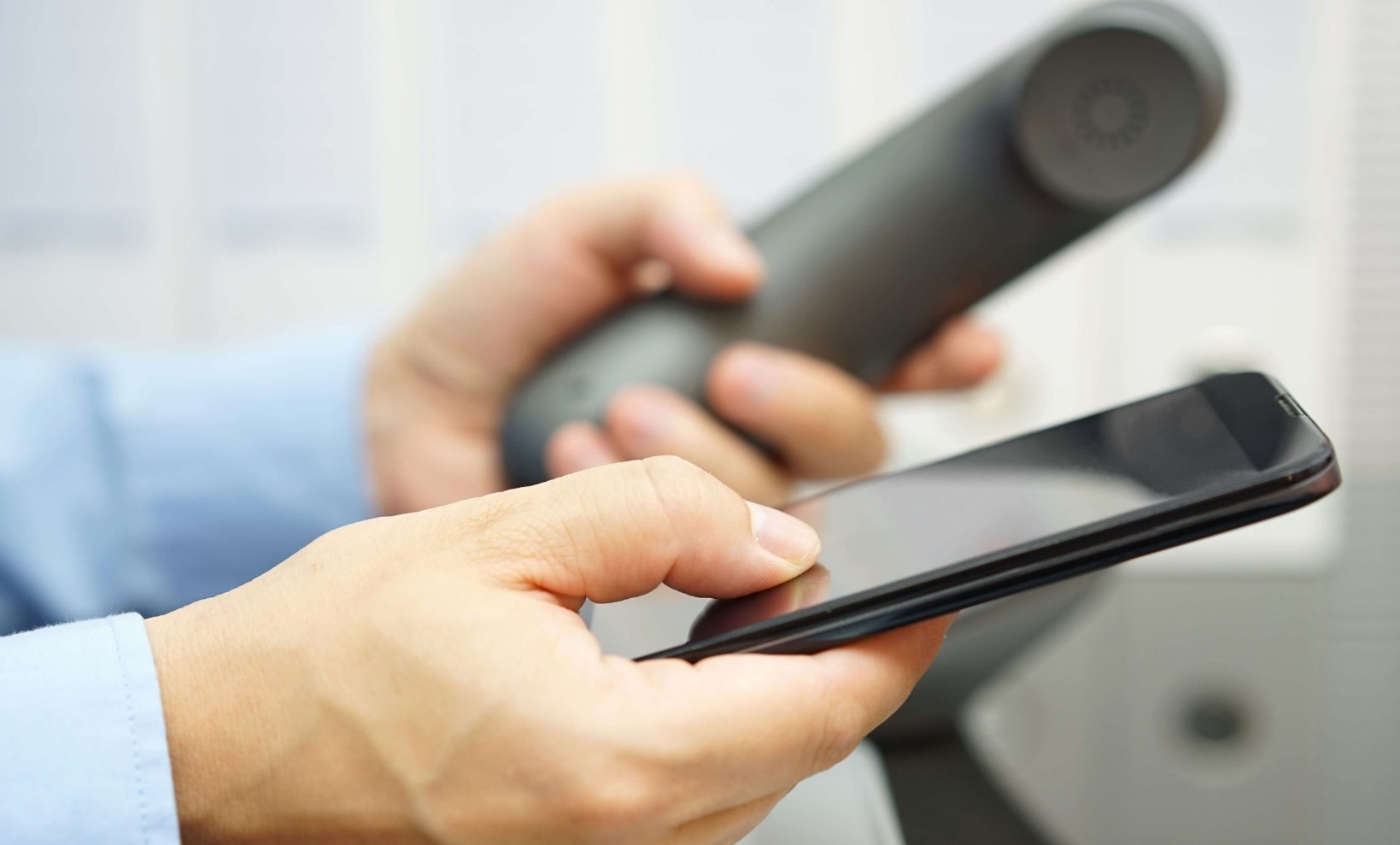
Having the ability to forward landline calls to your cell phone offers convenience and flexibility. Whether you’re out running errands, traveling, or simply prefer to have all your calls in one place, call forwarding can help streamline communication. Let’s explore how you can set up call forwarding and make the most of this feature.
Understanding Call Forwarding
Call forwarding is a telecommunications feature that allows you to redirect incoming calls from one phone number to another. When someone calls your landline, the call is automatically rerouted to your designated cell phone, ensuring you can answer it regardless of your physical location.
Benefits of Forwarding Landline Calls to Cell Phones
Forwarding landline calls to cell phones comes with several advantages. Firstly, it enables you to stay reachable even when you’re not near your landline phone. This is particularly useful for professionals who are often on the go or work remotely. Secondly, call forwarding allows you to consolidate all your calls to one device, reducing the need to manage multiple phones. Additionally, it enhances your overall responsiveness and customer service by ensuring calls are promptly attended to.
How to Forward Calls from a Landline to a Cell Phone
Now, let’s dive into the process of forwarding calls from a landline to a cell phone. Follow these steps to get started:
Step 1: Check with Your Phone Service Provider
Before setting up call forwarding, it’s essential to verify if your landline service provider supports this feature. Contact their customer support or check their website for information regarding call forwarding options.
Step 2: Activate Call Forwarding on Your Landline
Once you’ve confirmed that call forwarding is available, you’ll need to activate the feature on your landline. The specific method may vary depending on your phone service provider, so consult their documentation or contact customer support for guidance.
Step 3: Set Up Call Forwarding Options
After activating call forwarding on your landline, you’ll have the option to customize its settings. This includes specifying the cell phone number to which calls should be forwarded and defining additional preferences such as forwarding only when your landline is busy or unanswered.
Step 4: Test Call Forwarding
To ensure that call forwarding is functioning as expected, test the feature by making a call to your landline. It should now automatically redirect to your cell phone. If the forwarding doesn’t work correctly, consult your service provider’s troubleshooting resources or contact their support for assistance.
Considerations and Limitations of Call Forwarding
While call forwarding offers great convenience, it’s essential to consider a few factors before implementing it.
▪ Compatibility with Landline and Cell Phone Services
Ensure that both your landline and cell phone services are compatible with call forwarding. Older landline systems or certain cell phone carriers may not support this feature. Confirm compatibility with your service providers to avoid any surprises.
▪ Cost Considerations
Some service providers may charge additional fees for call forwarding services. Familiarize yourself with the associated costs, including any per-minute charges, and assess whether the benefits outweigh the expenses.
▪ Privacy and Security
When forwarding calls to a cell phone, remember that sensitive information may be shared on the redirected device. Take appropriate measures to safeguard your cell phone’s privacy and security, such as enabling password protection and using secure networks.
Alternatives to Call Forwarding
While call forwarding is a widely-used method for redirecting calls, there are alternatives worth exploring:
| Alternative | Description |
| Virtual Phone Systems | Feature-rich systems that offer more than just call forwarding. |
| VoIP Services | Internet-based services that provide call forwarding and other features. |
| Mobile Apps | Applications that allow call forwarding using internet connectivity. |
While call forwarding is a popular method for redirecting calls, there are alternative solutions available that offer additional features and flexibility. Let’s explore these alternatives in detail:
Virtual Phone Systems
Virtual phone systems are comprehensive communication platforms that provide a wide range of features beyond call forwarding. These systems are particularly popular among businesses of all sizes. Some key features of virtual phone systems include:
- Voicemail: Virtual phone systems often include advanced voicemail options, such as voicemail-to-email transcription, customizable greetings, and message storage.
- Call Recording: Many virtual phone systems offer call recording capabilities, allowing you to review important conversations or use them for training purposes.
- Call Routing: These systems provide sophisticated call routing options, such as automatic call distribution (ACD), interactive voice response (IVR), and call queuing.
- Integration: Virtual phone systems often integrate with other business tools like customer relationship management (CRM) software, team collaboration platforms, and helpdesk systems.
VoIP Services
Voice over Internet Protocol (VoIP) services utilize the internet to transmit phone calls, offering cost-effective solutions with various features, including call forwarding. Here are some advantages of VoIP services:
- Cost Savings: VoIP services generally have lower calling rates compared to traditional landline services, especially for long-distance and international calls.
- Flexibility: VoIP services allow you to make and receive calls from multiple devices, including smartphones, tablets, and computers, ensuring you can forward calls to any preferred device.
- Additional Features: Apart from call forwarding, VoIP services often include voicemail, call screening, call blocking, and advanced call management options.
Mobile Apps
Numerous mobile applications are available that offer call forwarding functionality, leveraging internet connectivity. These apps are typically easy to set up and use, providing convenience and flexibility. Here are some benefits of using mobile apps for call forwarding:
- Mobility: With mobile apps, you can forward calls to your cell phone, ensuring you stay connected even when you’re away from your landline phone.
- Customization: Many mobile apps allow you to customize call forwarding settings based on specific conditions, such as forwarding calls only during certain hours or when your landline is busy.
- Additional Features: Some mobile apps offer advanced features like call recording, voicemail transcription, and integration with other communication tools.
It’s important to explore these alternatives and consider your specific needs when deciding on the best solution for call forwarding. Each option has its own advantages and may be more suitable depending on your requirements.
Remember to check the compatibility and features of each alternative with your existing phone systems and service providers before making a decision.
Troubleshooting Call Forwarding Issues
If you encounter any issues while setting up or using call forwarding, here are some troubleshooting steps to try:
- Double-check your call forwarding settings and ensure they are correctly configured.
- Restart your landline phone and cell phone to refresh their connections.
- Contact your service provider’s support team for assistance with any technical difficulties.
Forwarding landline calls to cell phones provides a practical solution for staying connected in today’s fast-paced world. By following the steps outlined in this article, you can easily set up call forwarding and ensure you never miss an important call, no matter where you are. Embrace the convenience and flexibility call forwarding offers, and enjoy seamless communication.
FAQs
- Can I forward calls from my landline to multiple cell phones simultaneously? Yes, some phone service providers allow you to forward calls to multiple cell phones, ensuring everyone receives the call.
- Can I forward landline calls to a cell phone when traveling internationally? Call forwarding may work internationally, but it’s essential to confirm with your service provider and understand any associated costs.
- Can I forward landline calls to a cell phone temporarily? Yes, you can activate call forwarding on your landline for a specific duration or until you disable the feature.
- Can I forward calls from a cell phone to a landline? While this article focuses on forwarding landline calls to cell phones, the reverse process is also possible. Contact your cell phone service provider for instructions.
- Is call forwarding available for mobile landlines as well? Yes, call forwarding can be set up on mobile landline systems. Consult your service provider for specific instructions.
